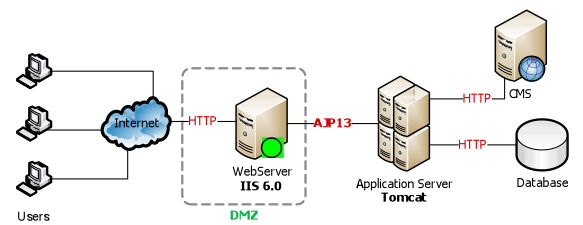I installed lucee locally on my laptop and had no issues. I now have enough done on this project and am ready setup a live server on our internal network (not accessible from the outside). It’s an older server, 2008 R2 with IIS installed.
Now, as I understand it, Lucee needs IIS and that it can’t/shouldn’t be run using just tomcat (first confusion, why?). If you tackle this answer, please keep it high level.
Locally, I wasn’t using IIS, just the default lucee installation with the document root under C:\lucee\tomcat\webapps\ROOT. I was able to development, restart apache tomcat as needed, no issues. I could access my project as well as the Lucee Admin. Life was good.
Now on with the frustration part, the server…
I have lucee and iis installed and working or so it seems on the Windows Server 208 R2 dev server. When I RDP to the server, I can browse localhost OR the url project.server.com:8888 and the page will come up. However, I cannot access the URL from my laptop, the connection never completes. PING returns just fine. I’ve tried setting up a host entry locally just in case and the DNS server has an entry as well - neither appeared to help. I have added a context entry in server.xml (code snippet further down). If I stop either IIS or Tomcat service, the “hello world” index.cfm will not display (as expected). When both services are running, the page will display again (as expected) - again, the page is only viewable when viewed on the sever using RDP. Now the part I also find odd (though I understand because which ever starts up first will grab port 8888) is I can view my demo page OR the admin area depending on which service I start first. To see the admin, I have to start tomcat first. To see my demo page, I have to start IIS first. There does not appear to be any ports blocked. NOTE: I am not using port 80 but rather 8888. There are other sites being served that are using port 80 and I don’t want to interfere with them. The other sites are using apache 2.xx and running off of cf2012. Those sites are working just fine.
What am I missing that is preventing the lucee project from being displayed?
My connector (I don’t understand why the redirectPort is 8443 here):
<Connector port="8888" protocol="HTTP/1.1"
connectionTimeout="20000"
redirectPort="8443"
URIEncoding="UTF-8" />
My Host entry
<Host name="project.devserver.com"
appBase="webapps"
unpackWARs="true"
autoDeploy="true"
xmlValidation="false"
xmlNamespaceAware="false">
<Context path="" docBase="C:\websites\project" />
<Alias>project.devserver.com</Alias>
</Host>
This should be a pretty straight forward setup but I’m missing something. Any tips?
Follow up question:
If I am using IIS, do I even need a server.xml entry in tomcat?
Not my image below but this is how I understand the workflow…
